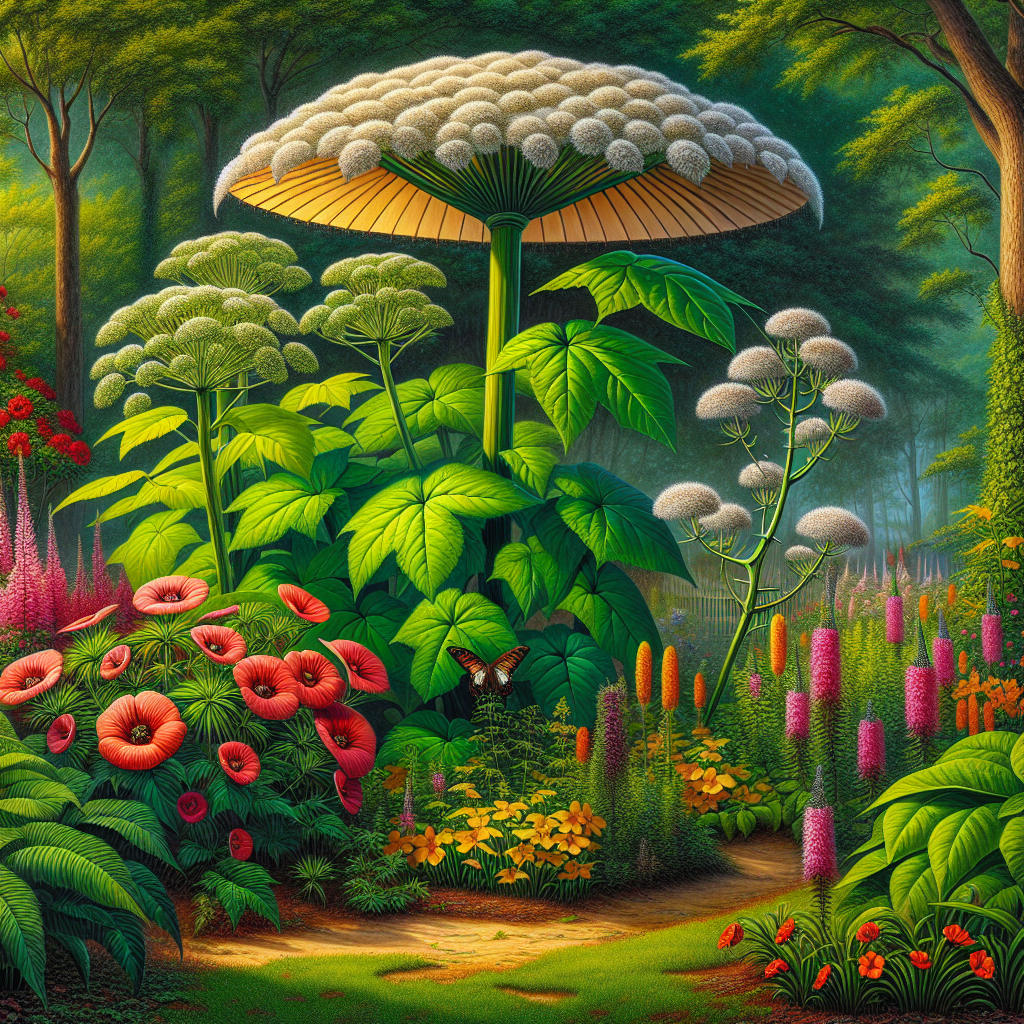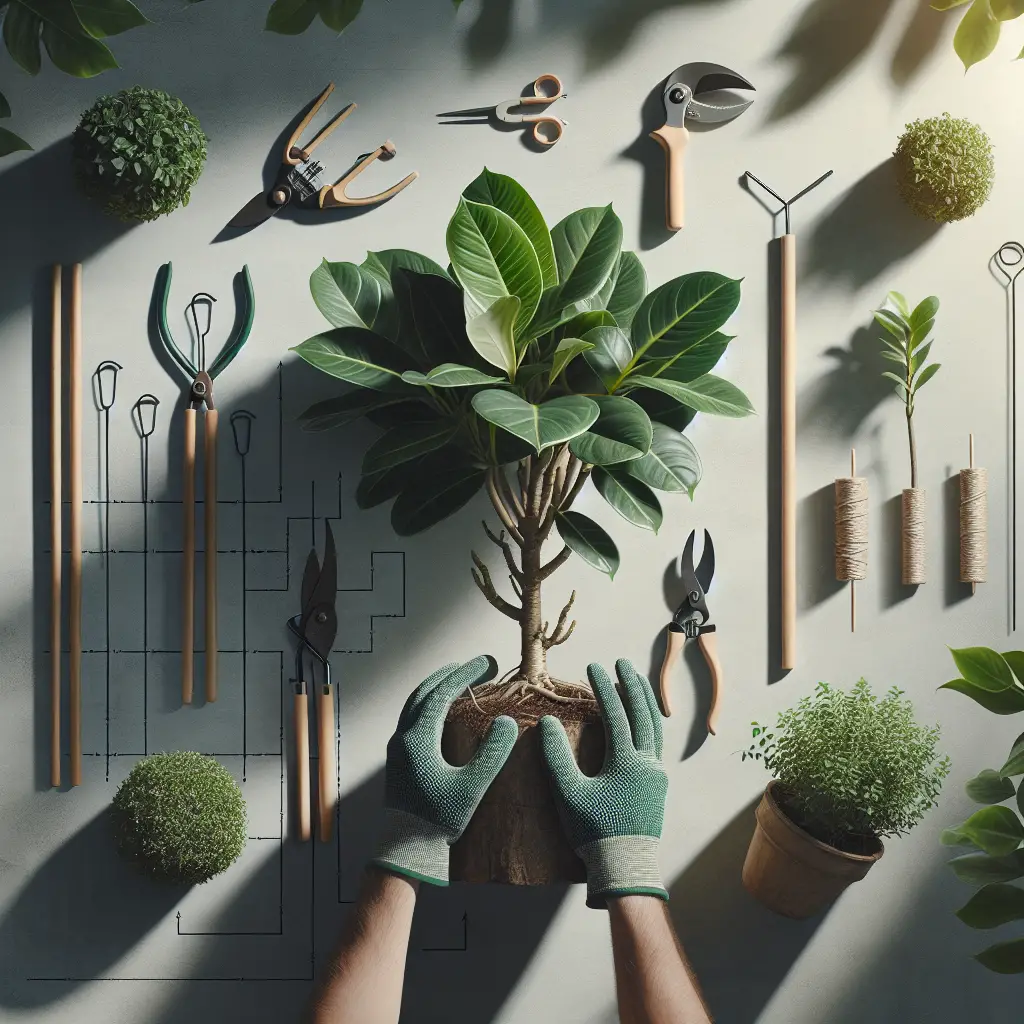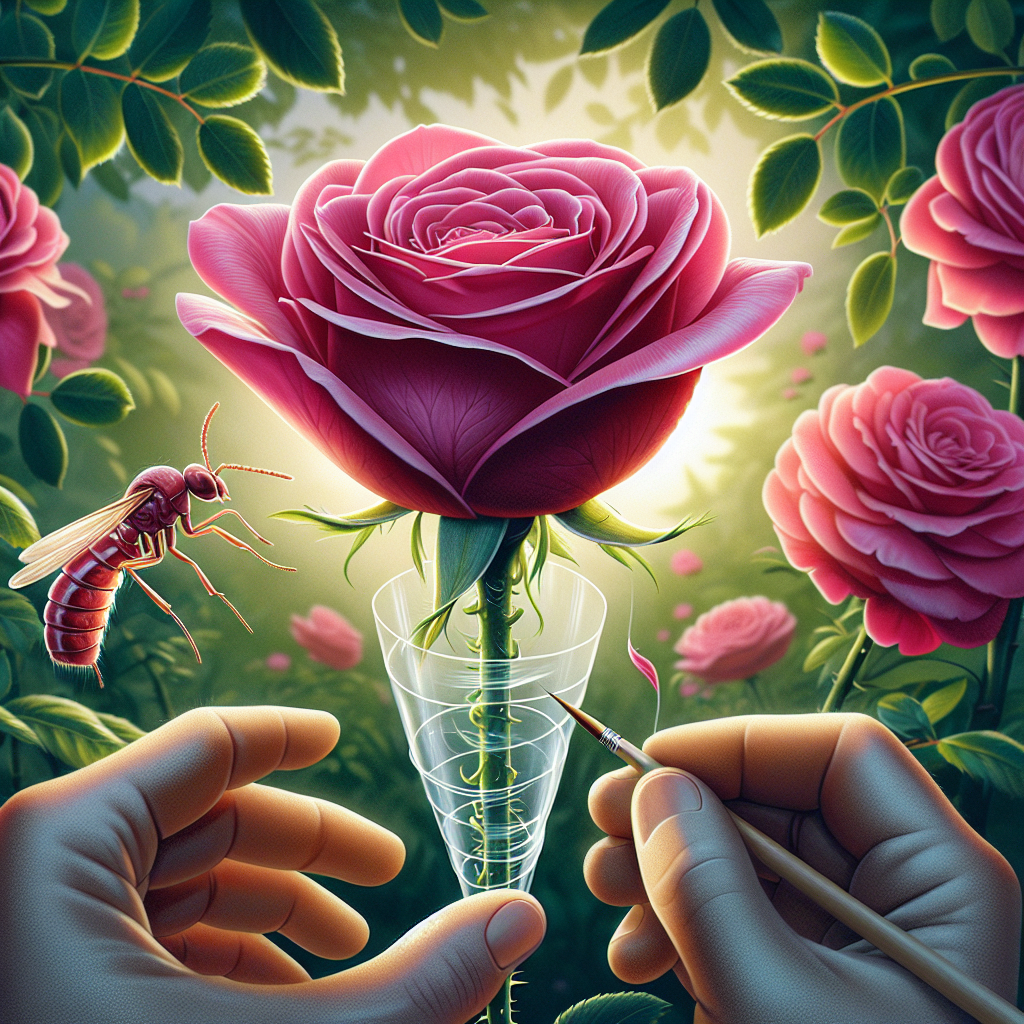South Carolina’s Garden Plant Dangers: What to Know
Updated July 11, 2024 at 1:18 am

Understanding Garden Plant Risks in South Carolina
If youre cultivating a garden in South Carolina, you might find yourself surrounded by a diverse array of flora. While gardening can be a rewarding hobby, it is also important to be aware of the potential dangers some plants pose.
To help guide you, lets take a closer look at the specifics of these plant dangers and practical advice to ensure your gardening remains a safe and enjoyable experience.
- Pet Friendly: Ensure that plants are non-toxic to animals, as pets tend to nibble on garden fauna.
- Light Requirements: Understanding the light needs of your plants helps avoid potential health issues associated with too much or too little sun.
- Watering: Too much or too little water can put your plants at risk of developing diseases or attracting pests.
- Humidity: South Carolina’s humidity can contribute to disease. Know which plants thrive or suffer in it.
- Temperature: Sudden changes in temperature can damage plants, be mindful of native species’ resilience.
- Difficulty: Be aware of the care complexity of each plant, as some require more attention and expertise to avoid problems.
What Are The Common Toxic Plants in South Carolina Gardens?
Identifying potentially toxic plants is crucial to garden safety. Here is a list of common hazardous plants found in South Carolina:
The Oleander, for example, is a popular ornamental shrub with a hidden danger. Its beautiful blooms can entice, but all parts of the plant are highly toxic if ingested.
How to Recognize Poisonous Plant Features?
Many poisonous plants share common traits. Look out for milky sap, which can be a tell-tale sign. Additionally, plants with umbrella-shaped flower clusters should be approached with caution.
Its valuable to familiarize yourself with plants like Poison Ivy, known for its ‘leaves of three’. Touching its oil can cause rashes and itching, so recognizing its shiny green leaves and red stems is beneficial.
Managing Poisonous Plants: Removal or Control?
When dealing with toxic plants, carefully consider whether to remove or control them. For instance, removal might be best for plants like Poison Hemlock, which is extremely toxic and can spread quickly.
On the other hand, some plants like English Ivy, though irritating to the skin, can be managed with protective gloves and regular clipping to prevent undesirable spread.
Protective Gear and Safely Handling Harmful Plants
Gearing up is a must. The use of gloves, long sleeves, and eye protection is advised. When removing dangerous plants, tools like the Fiskars 4-Claw Weeder offer a convenient and safe way to uproot weeds without exposure, and reviewers rave about its back-saving design.
Another recommended product is the Roundup Ready-To-Use Poison Ivy Plus Tough Brush Killer. It targets tough plants and gets high marks for effectiveness in reviews, making it a valuable addition for those facing persistent garden pests.
Find This and More on Amazon
Caring for Plants and Preventing Disease
Maintaining plant health is key to preventing diseases that can turn hazardous. Regular monitoring and appropriate watering, feeding, and pruning practices will keep your plants in good condition.
It’s also wise to choose disease-resistant varieties whenever possible. For example, when growing roses in South Carolina, opt for varieties like ‘Knock Out’ roses, which are praised for their resilience against common rose diseases.
Natural Alternatives for Garden Safety
Using natural means to control garden pests and diseases reduces the need for chemical interventions. Neem oil, for instance, is a natural product that can treat various plant issues, and numerous user reviews confirm its efficacy as a fungicide and pest deterrent.
Additionally, encouraging local wildlife, such as birds and beneficial insects, can provide natural pest control. Products like the Perky-Pet Bird Feeder are often recommended by enthusiasts to attract birds that feed on common garden pests.
Find This and More on Amazon
First Aid: Responding to Exposure to Garden Toxins
In the event of exposure to a garden toxin, prompt action is crucial. It’s essential to have a well-stocked first aid kit on hand, and learning the basics of plant poisoning treatment is highly recommended.
For skin irritations, washing with soap and water, followed by applying calamine lotion can help soothe discomfort. If ingestion occurs, contact poison control immediately for assistance.
How to Educate Children and Visitors on Plant Safety
Education is vital to garden safety. If you often have children or guests near your garden, consider using plant markers or signs to denote which plants are safe and which are not.
Offering a simple walkthrough or creating an informative pamphlet can also help ensure everyone understands the importance of not touching or consuming unknown plants.
Conclusion and Content Area 2 of 3
(Part 2 information will be provided in a separate prompt to complete the article per the initial request.)
Ensuring Pet Safety Around Harmful Plants
For many garden lovers, pets are considered part of the family, and their safety is paramount. Pets, particularly dogs and cats, may be prone to chewing on garden plants, which can lead to poisoning.
A good practice is to be vigilant about plant selections. For instance, avoid Sago Palms, as they are extremely toxic to pets. Instead, consider pet-friendly alternatives like Sunflowers or Zinnias to add color without risk.
Dealing with Invasive Plant Species
Invasive species can pose a significant threat to your garden’s ecosystem. Plants such as Kudzu are notorious in South Carolina for overtaking native species, and once established, they can be difficult to control.
Mechanical removal, while labor-intensive, is often the most effective strategy against Kudzu. Consistently cutting back the vines before they seed can eventually weaken the plant.
Choosing the Right Fertilizers and Pest Control
Fertilizers enhance plant growth, but the wrong type can cause foliage burn or additional stress. Slow-release fertilizers are a safer choice, providing nutrients over time.
For pest control, rather than reaching for harsh chemicals, consider soaps like Safer Brand Insect Killing Soap. This product is well-reviewed for being a gentle yet effective option against soft-bodied pests like aphids and spider mites.
Find This and More on Amazon
Garden Planning to Minimize Risks
Strategic garden planning can significantly minimize the risks associated with toxic or invasive plants. Consider plant placement carefully, ensuring that known toxic species are out of reach of children and animals.
Utilize garden design to create barriers or designate safe areas. Raised beds and containers can also offer a controlled environment, reducing the likelihood of unwanted plant spread.
Regular Maintenance to Keep Dangers at Bay
Regular garden maintenance is more than a chore; it’s a preventive measure. By routinely inspecting your plants, you can identify early signs of disease, pest infestations, or the encroachment of poisonous plants.
Tools like the Corona ClassicCUT Forged Bypass Pruner are highly regarded for their durability and precision, making them excellent for regular pruning to keep your garden healthy and safe.
Staying Informed on Local Plant Advisories
Keeping abreast of local agricultural and environmental advisories in South Carolina is a proactive step towards garden safety. Such advisories might provide warnings about new toxic plant sightings or growing conditions that favor invasive species proliferation.
Participating in local gardening groups or forums can also keep you informed about regional concerns and solutions from fellow gardeners facing similar challenges.
Avoiding Problematic Pesticides and Herbicides
Pesticides and herbicides can contain harmful chemicals that pose risks to the environment and personal health. When necessary, opt for organic or natural options that target specific pests without broad-spectrum impact.
Products like the EcoSMART Organic Insecticide offer a safer alternative, employing plant oils to control pests effectively. This eco-friendly choice is well-received by those who prioritize safety without compromising on results.
Conclusion and Content Area 3 of 3
(Part 3 information will be provided in a separate prompt to complete the article per the initial request. This will include final thoughts, additional safety tips, and how to maintain the joy of gardening while managing the risks.) You are currently writing Content Area 3 of 3, extend from this.
Understanding Hazardous Weeds and Proper Disposal
Hazardous weeds not only threaten the health of your other plants but can be dangerous to your wellbeing. Weeds like Jimsonweed, with its distinct trumpet-shaped flowers, are toxic and should be handled with care.
After removal, don’t just toss these weeds into the compost pile, as this could unintentionally spread them. Securely bag them and check with local waste management on the preferred disposal method.
Choosing Plants that Thrive in South Carolina’s Climate
Selecting plants well-suited for South Carolina’s climate can reduce the risk of stresses that make plants more susceptible to disease and pests. For instance, Lantana is a colorful, hardy plant that tolerates heat and drought, reducing the need for intensive maintenance and chemical treatments.
Consider native plants like the Purple Coneflower, which is not only hardy but also offers the added benefit of supporting local wildlife, like birds and butterflies, which can help with pest control.
Safe Ways to Encourage Pollinators into Your Garden
Encouraging pollinators such as bees, butterflies, and hummingbirds is beneficial for plant health and biodiversity. Avoid using broad-spectrum pesticides that can harm these beneficial creatures.
Consider planting a variety of flowering plants with different blooming times to provide a consistent food source. Lavender and Bee Balm are great non-toxic choices that are known to attract pollinators.
How Watering Practices Affect Plant Safety
Proper watering practices are essential to prevent the spread of plant diseases, such as root rot and mildew. Water in the morning so foliage has time to dry, and use soaker hoses instead of overhead watering to keep leaves dry.
Investing in a simple moisture meter, like the XLUX Soil Moisture Meter, can help you water correctly. This handy tool has been recommended in reviews for giving accurate, no-battery-required soil moisture readings.
How Proper Pruning Can Help Avoid Garden Hazards
Pruning your plants isn’t just about keeping them looking good; it’s about maintaining their health and preventing the growth of harmful bacteria and fungi. Cutting away dead or diseased branches allows for better air circulation and reduces the risk of contamination.
The Fiskars Bypass Pruning Shears are an excellent tool for the job, with their sharp blades making clean cuts that heal quickly. Reviews often highlight their comfort grip and ease of use, making them a top choice for gardeners.
Integrating Companion Planting for Natural Protection
Companion planting is an age-old practice where certain plant combinations naturally help deter pests and improve growth. Marigolds, for example, are known to repel nematodes and some insects when planted near vegetables.
Garlic is another great companion plant, with its strong scent reportedly helping to mask the aroma of other plants, keeping pests at bay.
Understanding Local Wildlife: Friends or Foes?
Local wildlife can be both beneficial and detrimental to your garden. While birds and beneficial insects are allies, animals like deer and rabbits may see your garden as a free meal.
To keep unwelcome animals out, natural deterrents like the Havahart Deer Off Repellent can offer a compassionate solution. This repellent receives positive reviews for its effectiveness and is appreciated for its long-lasting, weather-resistant formula.
Regulations on Exotic and Invasive Plants
Be aware of state and local regulations regarding exotic and invasive plants. Some species may be prohibited due to their impact on local ecosystems. Always research before bringing a new plant home.
When in doubt, consult with local nurseries or extension services, which can offer valuable advice on plants that are both beautiful and compliant with environmental guidelines.
Enjoying the Beauty of South Carolina Gardens Safely
Gardening in South Carolina can be a delightful experience. By staying informed and vigilant, you can enjoy the beauty of your garden without compromising safety.
Remember to always research new plants, use recommended products wisely, and keep up with regular garden maintenance. This way, you can continue to cultivate a beautiful and safe garden oasis.
Shop more on Amazon

